Gun Control means Using Both Hands
Gun Control means Using Both Hands
Editor-in-Chief’s Note: Please join us in welcoming former Navy SEAL and current Director of Training at Center Mass Group, Chris Sajnog as a contributor on ITS Tactical.
I live in the Socialist Republic of California, where we take gun control to the extreme. I’m not too sure of the exact language of all the gun laws we have here, but I’m pretty sure you can still possess a BB-gun as long as it is a single-load, one-pump deal and you use soft rubber projectiles.
Because of all the restrictions on capacity, we need to make sure every shot we fire finds its mark. In the other 49 states across our Great Nation, feel free to spray and pray, but when in the Republic…Gun Control rules the day.
Today I’m going to address three amendments that need to be added to the current list of gun control laws. By enacting these laws, you will find that not only will your rounds will be delivered safely to their intended target, but you will even save money by wasting less ammunition.
Law # 1: Stand and Deliver
The first law in our amendment is an aggressive stance. This means having your body weight leaning forward towards your target. During a gun fight you’re not going to be able to figure out what percentage of weight is on our toes or your heels, so get that idea out of your head right now.
Just lean into the shot with a low, wide stance. Due to the many positions your lower body may find itself in during a gun fight, it’s important that you learn to control the gun with your upper body. Keep it simple: Lean forward.
Law # 2: Get a Grip
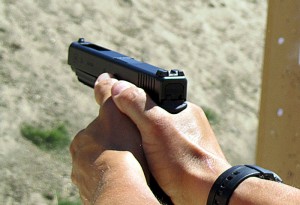 How you grip your favorite firearm is vital to gun control. This is the junction between yourself and the explosion going off in your hand, so it needs to be solid. Make sure that you have a gun that fits your hand. This isn’t possible for the military or most law enforcement groups, but maybe that’s why some of the gun control laws don’t apply to these groups.
How you grip your favorite firearm is vital to gun control. This is the junction between yourself and the explosion going off in your hand, so it needs to be solid. Make sure that you have a gun that fits your hand. This isn’t possible for the military or most law enforcement groups, but maybe that’s why some of the gun control laws don’t apply to these groups.
If you’re planning on buying a gun, make sure you try it out in your hand before making the purchase. You need to be able to wrap your hand around the grip with your forearm in a straight line behind the gun and your trigger finger needs to be able to press straight back on the trigger without dragging along the side of the gun. Be sure to read my last article, You Want Me to Do What with My Finger? to dispel any myths you might have on finger placement.
When you grip the gun, make sure that the forearm of your strong hand is in line with pistol. Your hand also needs to be as high up the gun as possible. In a perfect world you would have your hand directly behind the barrel, but most guns have moving parts up there making this impossible. Keeping this in mind, your hand should be high enough on the grip so the webbing of your hand is compressed on the beaver-tail. Wrap your hand around the gun and make sure your trigger finger is not riding along the side of the grip as this can pull the gun off target as you press back on the trigger.
If you’re using a two-handed technique (and I suggest you do whenever possible), the support or reaction hand should be placed with the palm of the hand filling the space on the grip left by the strong hand. To do this your support hand should be angled down at about a 45-degree angle. Some people teach a 60/40 grip for how hard you should be gripping the gun. I teach a 100/100 grip since that’s what you’re going to do in combat and it’s best to think about how you’re going to drop the threat rather than how hard you’re squeezing the gun with each hand. Both your thumbs should be pointing forward. I’ve found that the more things you have pointed at your target, the better chance you have at hitting it.
Now that you’ve got the perfect grip, put the gun back in the holster and take the time to note the position of your hand. Your grip needs to be established in the holster and you need to practice getting the right grip every time. Did I hear someone say dry-fire? Practice drawing the gun from its holster and bringing it up on target making sure you have the right grip. Once you’ve got the thing out in your hand, the grip you’ve got is the one you’re going to shoot with, make sure you get it right.
Law # 3: Control of Assault Weapons
The grip for the firing hand of a carbine is the same as a pistol. The gun is controlled with support hand, leaving the strong hand to concentrate on fire-control. Before I talk about the forward grip of the carbine, I need to talk about accessories such as lights or lasers. Before you start tricking out your bang-stick with cool-guy gear, make sure you can shoot it accurately.
Take it out to the range and establish a solid shooting position and note where your forward hand grips the gun. Now look at the open space you have available, this is where you need to mount accessories. I see a lot of guys on the range saying they can’t grip the gun properly because something is in the way. Don’t let the tail wag the dog! You need to be able to shoot effectively first or that cool new light is not going to do you any good.
Now that we’ve cleared the playing field, grip your gun as far out on the gun as possible. I ask my students; if you were going to nail a 2×4 to a wall and only had two nails, where would you put the nails to give you the most support? The answer is always the same, as far apart as possible. If you want to support your gun, you need to do the same thing. There are a number of different ways to grip the gun, but it’s important that some part of your hand is above the level of the barrel.
The recoil of the gun is going to kick the gun up. If you’re trying to hold the gun from underneath, it’s going to recoil up every time. For the same reason it’s important that you take that hinge-point (elbow) out of the equation. Most people I see on the range shoot with the support elbow directly beneath the gun giving the weapon a perfect hinge to move around. By simply rotating the arm out to the side, you eliminate the hinge and are better able to control the gun. As with the pistol I like to point anything I can at the target. In this case, depending on your grip, you can either point your thumb or your index finger.
Gun Control: It’s your American Duty!
Help keep this land safe by following the gun control laws listed in this amendment. Write to your Senators and Congressmen and ask that these be brought up on the house floor for debate. I would love to hear what Senators Reid and Pelosi have to say about this important topic! What are your thoughts?
Editor-in-Chief’s Note: Please join us in welcoming Chris Sajnog as a contributor on ITS Tactical. Chris is a former Navy SEAL and the Director of Training for Center Mass Group, started by two retired Navy SEAL Instructors. Giving people the experience of being trained by the most elite combat unit in the world, Chris is currently a Maritime-Counter-Terrorism and advanced marksmanship Instructor who has trained DOD, DHS, FBI, CIA and multiple foreign allies in all aspects of combat weapons handling, marksmanship and Maritime Operations.






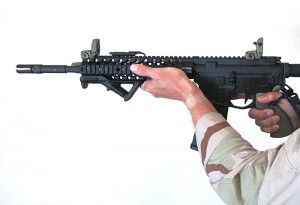
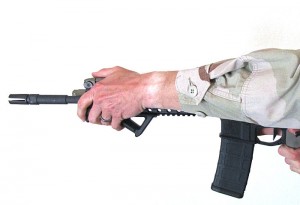
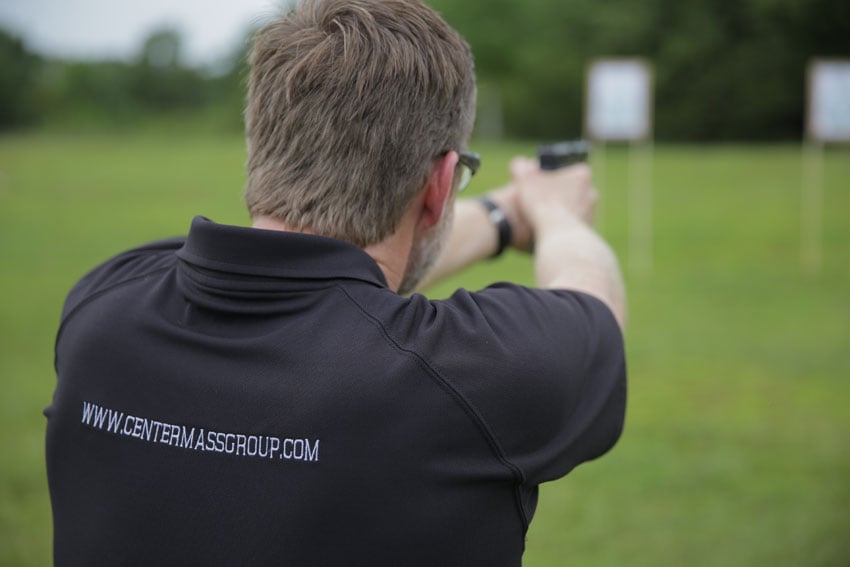
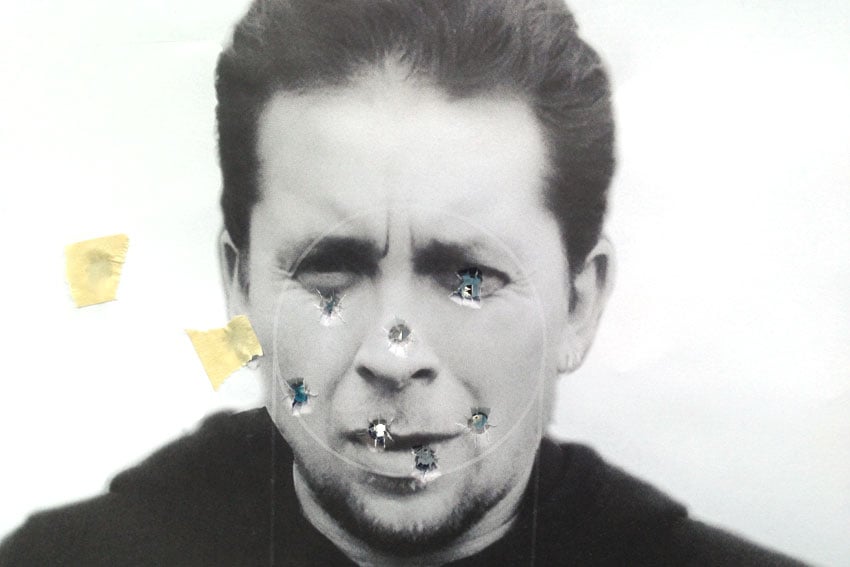


Discussion